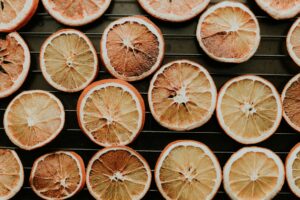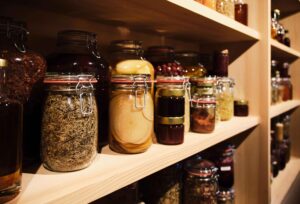Self-Sufficient Food Preservation, Methods, Recipes, and Eating
Ensuring a steady, sustainable food supply means not just growing or raising food but also preserving it effectively and making the most of what you produce. From time-tested preservation techniques to creative ways of preparing and consuming food, self-sufficiency involves understanding how to store, cook, and enjoy what you harvest year-round.
This page offers an overview of food preservation, eating methods, and recipes. Below, you’ll find key areas that link to deeper insights on specific food types—whether it’s how to store homegrown vegetables, keep meat fresh, or prepare nourishing meals from what you have. Click through each section to explore preservation techniques, practical meal ideas, and ways to maximize every part of your food.
Poultry
Poultry is a versatile and essential protein source for self-sufficient living. Raising chickens, ducks, or other birds provides eggs and meat, both of which require proper handling and storage.
- Preservation Methods: Freezing, curing, smoking, and pressure canning keep poultry fresh for long periods. Proper butchering and packaging techniques can further enhance storage longevity.
- Eating & Recipes: Poultry can be roasted, stewed, or slow-cooked, while eggs offer limitless meal options, from baking to omelets. Utilizing every part of the bird, including bones for broth and offal for nutrient-rich meals, maximizes your resources.
Livestock
Beef, pork, lamb, and other meats play a central role in a self-sufficient diet. Proper preservation ensures year-round access to high-quality protein, reducing waste and extending usability.
- Preservation Methods: Freezing, dry curing, smoking, and fermenting add longevity and flavor. Making use of traditional methods like salting and air-drying can be particularly useful for long-term storage.
- Eating & Recipes: From slow-cooked stews to grilled meats, livestock provides hearty, protein-rich meals. Nose-to-tail cooking minimizes waste, using every part of the animal, including rendering fat for cooking or making soap and using bones for broth.
Marine Animals
Fish and seafood, whether caught or farmed, require proper handling to maintain quality. Given their delicate nature, they need quick preservation and thoughtful preparation.
- Preservation Methods: Freezing, salting, pickling, and smoking keep seafood fresh and safe to eat. Methods like drying fish or making fish-based ferments help extend storage options.
- Eating & Recipes: From fresh ceviche to grilled fish, seafood offers diverse meal possibilities packed with nutrition. Making use of fish heads and bones for broths and sauces further ensures no part goes to waste.
Plants & Crops
Fruits, vegetables, grains, and legumes are the backbone of a self-sufficient diet. Proper preservation ensures that seasonal abundance lasts beyond the harvest.
- Preservation Methods: Canning, drying, fermenting, freezing, and root cellaring help extend shelf life. Dehydrating produce can be a simple yet effective way to store food for long-term use.
- Eating & Recipes: Homegrown crops provide ingredients for soups, salads, pickled foods, and preserves like jams or sauces. Fermented vegetables such as sauerkraut or kimchi offer health benefits and flavor diversity.
The Role of Preservation in Self-Sufficient Living
Food preservation isn’t just about storage—it’s about making the most of what you have, reducing waste, and ensuring a reliable food source year-round. Whether you’re storing surplus harvests, preparing meals from preserved ingredients, or finding creative ways to use every part of your food, self-sufficiency is about sustainability and resourcefulness.
By learning different preservation techniques and cooking methods, you can enjoy a diverse, nutritious diet while reducing dependence on external food sources. Understanding how to make preserved food taste as fresh as possible when used in meals is a valuable skill—whether that means rehydrating dried foods properly, incorporating fermented ingredients into daily meals, or blending preserved items into recipes that maximize flavor and texture.
Meal planning also plays a crucial role in self-sufficiency. Organizing meals around what’s in season or what has been preserved ensures a varied and balanced diet. Techniques like batch cooking, fermenting, and meal prepping help turn stored food into ready-to-eat, nutritious meals without waste.
In addition to preservation and cooking, food sustainability includes ethical considerations. Using organic, homegrown, or responsibly sourced ingredients aligns with the principles of self-sufficiency. Learning how to incorporate preserved foods into everyday cooking rather than relying on store-bought, processed options strengthens independence from commercial food supply chains.
Click through to each section to explore in-depth methods, recipes, and meal ideas that help make self-sufficient living both practical and rewarding.
The Latest on Food & Preservation from the grainshed blog
- How to Use or Sell Surplus Vegetables, Eggs, and Milk in Australia

- Best Food Dehydrators Under $300 in Australia (2026 Guide)

- Cost vs Yield Analysis: Preserving vs Selling Produce in Australia

- Modern Meat Preservation: Freezing, Vacuum Sealing and More for Australian Homesteads

- Curing Meat at Home: Brine vs Dry-Salt Methods for Australian Conditions

